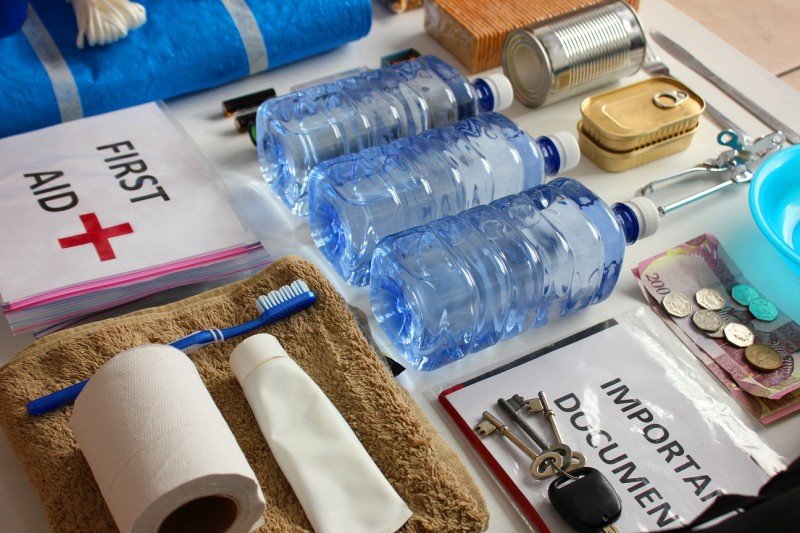When it comes to preparing for unexpected situations, having a well-stocked emergency supply is essential. However, simply stockpiling supplies is not enough; you need to regularly assess and evaluate your stock to ensure its effectiveness and readiness. Here are a few tips to help you assess your emergency supplies:
Check expiration dates
Begin by going through each item in your emergency stock and check their expiration dates. Food, water, medications, and other perishable items have limited shelf lives and may lose their efficacy over time. Make sure to replace any expired items with fresh ones to maintain the integrity of your emergency supply.
Inspect for damage and quality
Next, carefully examine your supplies for any signs of damage or deterioration. Check for leaks or drips in water containers, rust or corrosion in metal cans, and any compacted or spoiled food. Additionally, ensure that your flashlights, batteries, and other equipment are in proper working order. Replace any damaged or low-quality items to ensure your emergency supply is in optimal condition.
Consider changing needs and circumstances
As your circumstances and needs change over time, so too should your emergency supplies. Evaluate whether the contents of your emergency stock still align with your current situations. For example, if you have a new family member or a pet, make sure to include their specific necessities in your supplies. Adapt your stock based on any new medications, dietary requirements, or special needs you or your loved ones may have.
Create a rotation plan: Ensure freshness in your stockpile
When it comes to emergency preparedness, it's not enough to just stock up on supplies and forget about them. Maintaining the freshness and usability of your stockpile is critical for ensuring your readiness in times of crisis. That's why creating a rotation plan is essential.
The first step in creating a rotation plan is to take inventory of your supplies. Go through your stockpile and check the expiration dates of your canned goods, medications, and other items with limited shelf lives. Discard anything that is expired or will expire soon. This will help you determine what needs to be used first and what needs to be replenished.
Next, organize your stockpile in a way that allows for easy rotation. Place the items that will expire soonest towards the front, within easy reach. Use clear storage containers or label your shelves to help you quickly identify and access what you need. This will also prevent you from accidentally using older supplies first.
Finally, establish a regular schedule for rotating and replenishing your stockpile. Set reminders on your calendar or create a checklist to ensure that you don't forget. Consider rotating your supplies at least every six months, or more frequently if you live in an area prone to natural disasters or other emergencies. By staying on top of this routine, you can be confident that your stockpile is always ready to sustain you and your loved ones during difficult times.
Check expiration dates: Keep your supplies up to date
When it comes to being prepared for any emergency or survival situation, the expiration dates on your supplies are something you simply cannot ignore. It’s easy to assume that you’ll always have everything you need at your fingertips, but without proper rotation, you could be left with expired goods when you need them the most.
Start by going through your stockpile and checking the expiration dates on all your food and medication items. Remember, items like canned goods, freeze-dried meals, and even bottled water have specific shelf lives. Set a reminder to check and rotate your supplies every few months, ensuring that you use up the items closest to expiration and replace them as needed.
Don't forget about your first aid kit either! Bandages, ointments, and medications can lose their effectiveness over time. Make it a habit to keep your first aid kit up to date by regularly checking and replacing any expired items. By doing so, you'll have peace of mind knowing that your supplies are in good working condition and ready to go when an emergency strikes.
Use and replenish: Maintain a well-stocked survival kit
When it comes to disaster preparedness, having a well-stocked survival kit is essential. But it's not enough to simply check off the items on a list and forget about them. To truly revitalize your readiness, it's important to regularly rotate your supplies. This ensures that your kit remains up-to-date and functional, ready to support you in times of need.
Start by choosing a designated area where you can store your survival kit. It should be easily accessible and ideally located in a cool, dry place to preserve the integrity of your supplies. Remember, the goal is to be prepared for any situation, so consider the potential emergencies specific to your region when deciding what to include in your kit.
Once you have your survival kit assembled, it's crucial to regularly check and replace any expired items. Food, water, and medications should always be monitored for expiration dates and replaced as needed. Additionally, consider incorporating seasonal-specific items such as warm blankets in the winter or sunscreen in the summer. By routinely revisiting and replenishing your supplies, you can ensure that everything is in proper working order when an emergency strikes.
Finally, don't forget to adjust your survival kit based on any changes in your household. If you have a new family member or a pet, be sure to include the necessary supplies for them. And don't neglect to involve your whole family in the process — knowing what's in the kit and where it is stored can make a difference in a high-stress situation.

